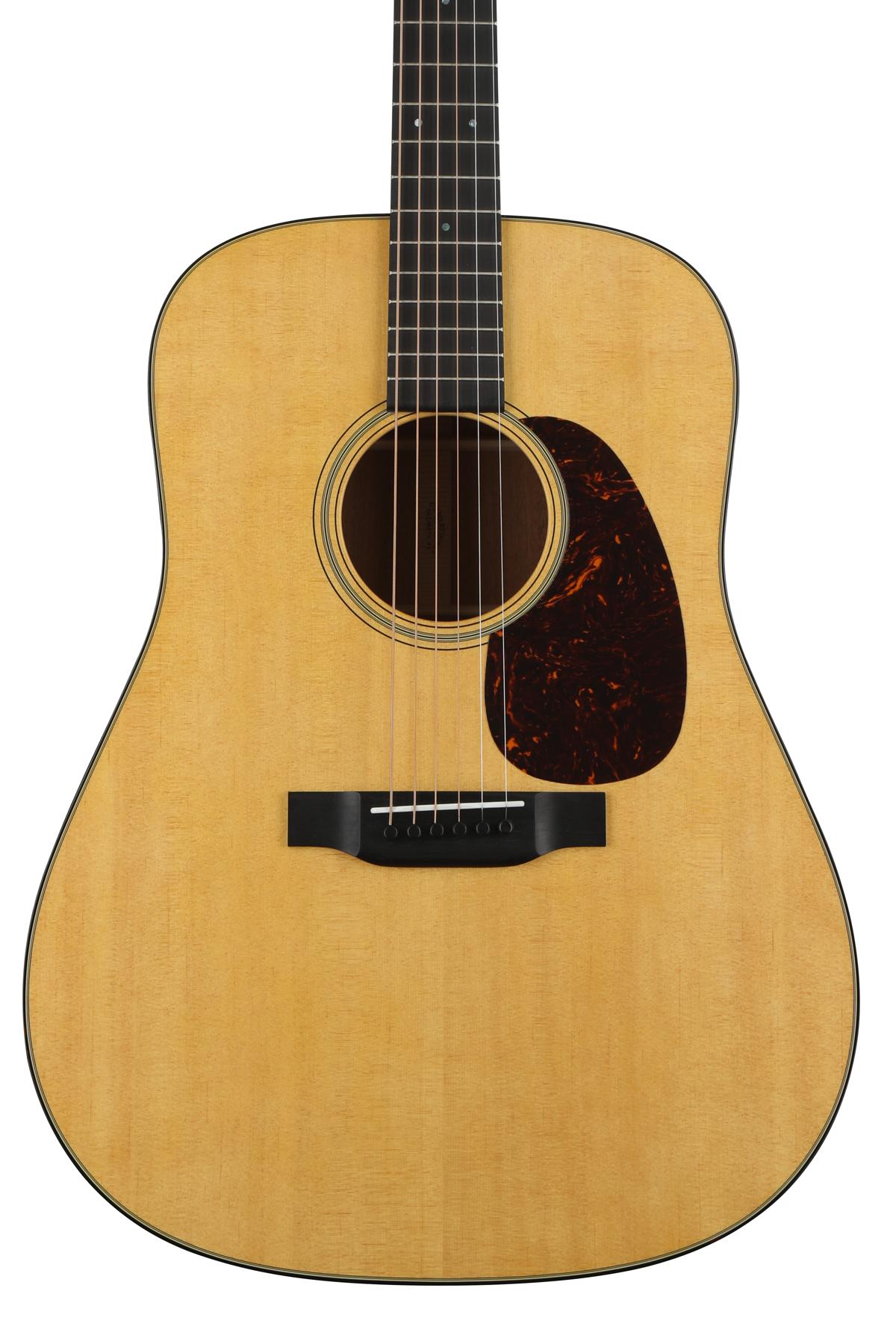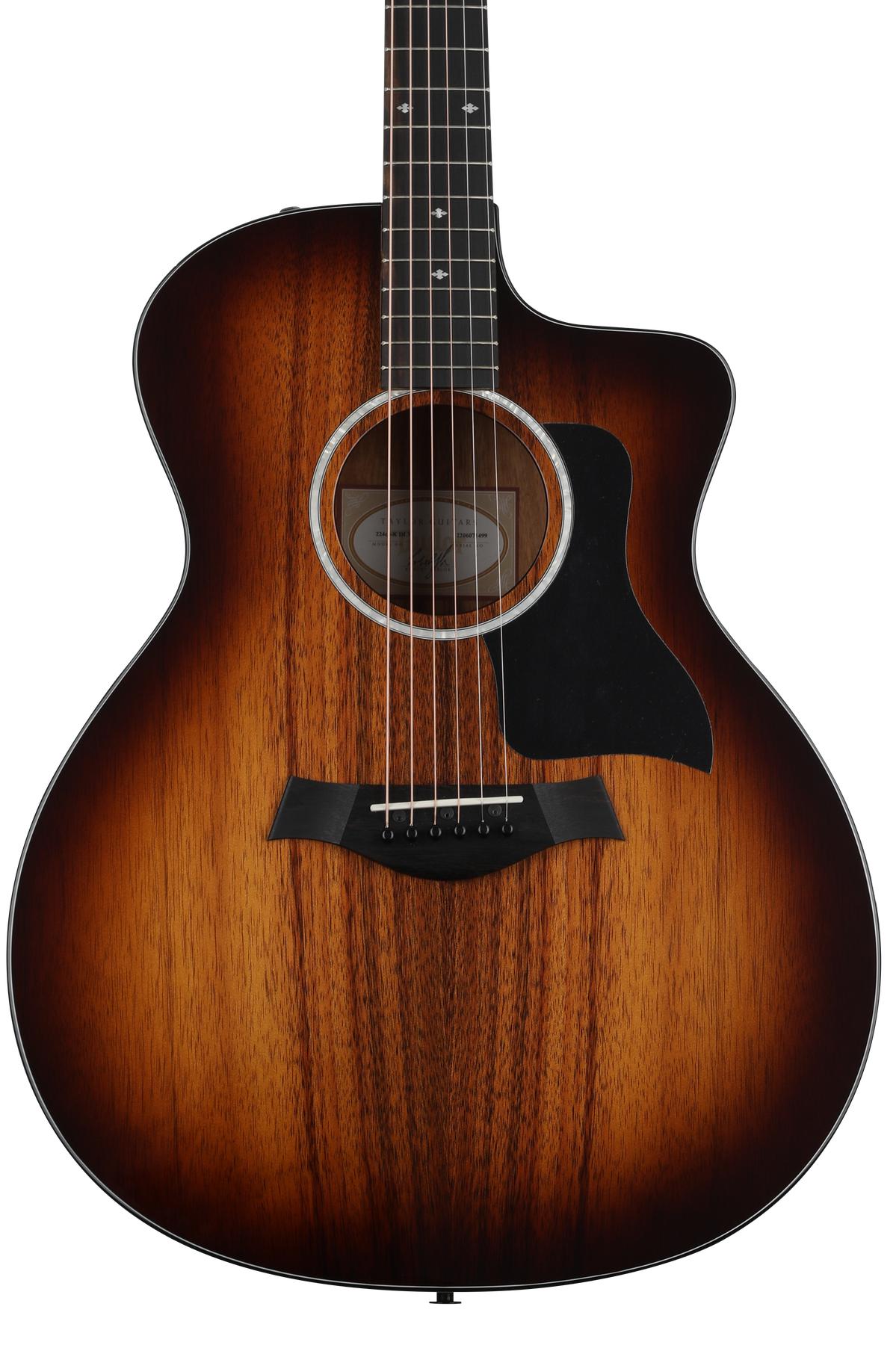In the world of acoustic guitars, Martin is a legend--this is the company that pioneered the dreadnought body and also had a hand in popularizing guitars with solid mahogany tops. The Martin D-15M is a guitar that combines classic, elegant design with unmatched playability.
Things To Consider Before Buying a Quality Dreadnought Acoustic Guitar
The Martin D15M isn't the most expensive acoustic guitar out there, but it's still a significant investment for most players. Before buying a guitar like this one, there are a few things you should keep in mind:
Our Picks for Review
Guitar | Guitar | Model | Price | Full Review |
|---|---|---|---|---|
Main | Martin | D-15M | Cell | |
Alternative | Martin | D-18 | Cell | |
Alternative | Taylor | 224 CE-K | Cell | |
Alternative | Blueridge | BR-160 | Cell |
Martin D15M Guitar
PRO's & CON's of Martin D15M
Before we launch into our review of the Martin D15M, let's look at some of this guitar's pros and cons

Pros
Cons
Features and Benefits
Tonewood Configuration
Tonewoods are one of the most important factors when it comes to the sound of a Martin guitar or any other, and mahogany has a beautifully warm and sound with a pronounced midrange and ample lows. As mahogany has steadily been becoming more scarce, more luthiers are turning to alternatives like African mahogany and sapele. But many guitarists agree that genuine mahogany has a sound that simply can't be replicated. Even the neck itself is made of solid genuine mahogany.
Of course, this tonewood choice isn't ideal for everyone--solid spruce is a common tonewood choice, especially for players who prefer a brighter tone. If you want to learn a bit more about mahogany as a tonewood, this video provides an excellent introduction.
Bracing And Sound Quality
Many newer Martin guitars use scalloped X bracing. The X-braced build is a mainstay in the acoustic guitar world, but some builders prefer scalloped bracing. Scalloping refers to a process where part of the wood bracing within the guitar is scraped away, resulting in a scalloped appearance. This process results in a sound where some of the midrange frequencies are "scooped" out, which gives you more pronounced highs and more noticeable lows.
In a guitar with a spruce top, scalloped bracing may result in a sound where highs are too pronounced. However, mahogany is a very midrange-focused tonewood, so scalloped bracing often gives you just enough tonal balance. However, tone is a very personal choice, especially when you're investing in a quality guitar. If you're looking to see if the sound of the D-15M is right for you, this video gives you a good idea of what it might be like to play one.
Neck
The neck of the Martin D15M deserves its own discussion, due in part to its unique joint. Most acoustic guitars use a simple dovetail joint. A simple dovetail neck is especially rigid, which absorbs less energy from each string. This results in a fuller, more natural sound.
Like most contemporary Martin guitar builds, the Martin D-15M is made with Martin's signature mortise and tennon joint. Compared to a simple dovetail neck, and mortise and tennon neck joint is easier to adjust in case of damage or excessive wear. Some players believe that a mortise and tennon joint is superior, while others argue that a simple dovetail neck creates a better sound.
Ultimately, the difference between a dovetail neck and a mortise ans tennon is fairly minimal when it comes to sound--bracing, tonewood choices, and body shape all have a greater impact. Unless you have a very strong preference for a simple dovetail, the dovetail neck vs. mortise and tennon question isn't a major one. If you want to know what the process of installing this neck joint looks like, this video shows how it's made.
The mahogany neck of the D-15M is made with the Martin modified low-profile shape. This neck shape is comfortable for most players--it has the slim, fast feel that many modern players prefer, but it has a thick enough feel for those who prefer the feel of a vintage acoustic. Like the rest of the body, it has a satin finish, which is fast-playing and doesn't have the sticky feel of a gloss neck. The fingerboard is made of beautiful solid East Indian rosewood, and it comes with understated diamond and square fingerboard inlay. Indian rosewood is a commonly-used wood for fretboards, and it helps create a warm yet articulate sound.
Other Appointments
Martin is a builder of quality guitars, and this one is no different. The D15M's appointments help round out its understated yet elegant appearance. Its tuning machines are open-geared nickel with vintage butterbean knobs. As many players know, the right tuning machines mean a lot when it comes to tuning stability, and these quality Martin-made tuners will help you avoid any tuning issues.
The bridge is made of solid East Indian rosewood, which offers a beautiful contrast to the mahogany top. The nut and compensated saddle are made of bone, which helps create impressive sustain. Up close, bone is a distinctly beautiful material, and it adds to this guitar's vintage good looks. This video offers a helpful comparison of bone and other nut materials.
Social Proof of the Guitar
Before selecting the D-15M, it's a good idea to get a sense of what other players have to say about it. This is especially helpful if you can't try out the guitar in person. Here are some of the Martin D-15M we've found online.

This concise Martin D-15M review covers what many players seem to like about this guitar--it has a beautiful, warm sound, and all-mahogany guitars (especially those made of solid wood) are somewhat hard to find.

This Martin D-15M review is a useful one because it compares this guitar to the Gibson J-200, another popular guitar. Like many other players, this person appreciates the sound of genuine mahogany.

This review writer is someone who primarily plays electric guitars, but they appreciated the feel and sound of the D-15M.
Alternatives to Martin D-15M
Before choosing a guitar, it's also wise to compare a few alternatives. Here are three guitars you might want to consider alongside the D-15M:
Martin D-18
How it Compares to Martin d15M
Review
Plenty of professional guitarists choose Martin, and the D-18 is an excellent choice if you have more to spend. This guitar is also a dreadnought with a modified low oval neck profile. However, it's made with a solid Sitka spruce top and solid mahogany back and sides. This classic tonewood configuration is ideal for just about any musical genre. If you prefer a spruce-topped Martin guitar, make sure you check this guitar out!
Taylor 224 CE-K
How it Compares to Martin D15M
Review
Like Martin, Taylor is a highly respected manufacturer of acoustic guitars. This one comes equipped with Taylor's Expression System 2 electronics, and its grand auditorium body is smaller and easier to handle than a dreadnought. This guitar has a solid koa top and laminated koa back and sides, a sapele neck, and an ebony neck.
If you prefer a guitar with electronics and are looking to spend about the same as the D15M, make sure you give this one a look.
Blueridge BR-160
How it Compares to Martin D15M
Review
Blueridge may not have the same long-standing reputation as Martin or Taylor, but their instruments are well-built and high-quality. The BR-160 is a dreadnought with a solid Sitka spruce top and solid Santos rosewood back and sides. Rosewood gives it a more detailed sound than the warmth of mahogany. Its forward-shifted bracing also helps increase your bass response.
If you want a vintage-inspired dreadnought that's a little different from the D-15M, make sure you check out this guitar!
In Conclusion
If you love dreadnought sound and prefer the warm tone of mahogany, the Martin D-15 M is an excellent choice. With a comfortable neck profile and a full, balanced sound, it works beautifully in a band or as a solo instrument. Plus, as Martin acoustics go, this one is at a fairly accessible price point. Click here to check it out!






